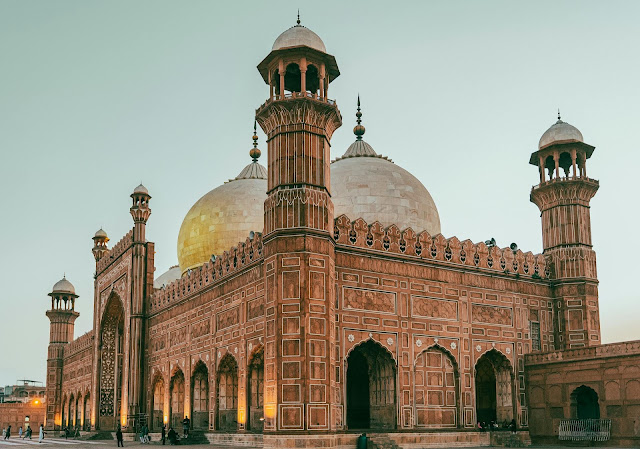 |
In the vibrant heart of Lahore, amidst the rich tapestry of history and culture, rises the Badshahi Mosque—an unparalleled testament to the divine and imperial grandeur of the Mughal Empire. Commissioned by the illustrious Emperor Aurangzeb in the 17th century, this architectural marvel stands as a symbol of both religious devotion and imperial splendor.
Historical Background of Badshahi Mosque
The creation of the Badshahi Mosque is deeply rooted in the ambitions of Emperor Aurangzeb, who ascended to the Mughal throne in 1658. In an era characterized by remarkable architectural and cultural achievements, Aurangzeb envisioned a mosque that would not only epitomize the might and majesty of his rule but also serve as a beacon of Islamic grandeur. His vision culminated in the construction of a mosque that, upon its completion in 1673, emerged as one of the largest and most exquisite mosques in the Islamic world.
Who was the architect of Badshahi Mosque ?
The mosque, designed by the eminent architect Ustad Khalil, reflects the zenith of Mughal architectural achievement. Constructed primarily of red sandstone, the mosque is adorned with intricate marble inlays and elaborate stucco work that showcase the artistry of the Mughal era. The vast prayer hall, with its central dome and towering minarets, is a marvel of engineering and design. Each element—from the ornate arches to the intricately decorated interior—demonstrates the profound commitment to both aesthetic beauty and structural integrity.
The central dome, an architectural centerpiece, rises majestically above the prayer hall, symbolizing the divine. The four towering minarets, each standing at over 50 meters, frame the mosque and emphasize its grandeur. The mosque’s façade, with its grand arches and delicate carvings, serves as a magnificent introduction to the sacred space within.
Cultural and Religious Significance of Badshahi Mosque
The Badshahi Mosque has long been more than a place of worship; it has been a cultural and spiritual beacon for millions. Its history is rich with religious significance, having served as a central place for congregational prayers, major Islamic festivals, and important ceremonial events. It reflects the Mughal Empire's dedication to promoting Islamic art and culture while also symbolizing the enduring legacy of a golden era of architectural and artistic excellence.
Preservation and Legacy
Throughout the centuries, the Badshahi Mosque has faced various challenges, including periods of neglect and repurposing during the British colonial era. However, the post-independence restoration efforts have been instrumental in preserving its original splendor. These efforts have ensured that the mosque continues to stand as a monument to divine and imperial magnificence.









0 Comments